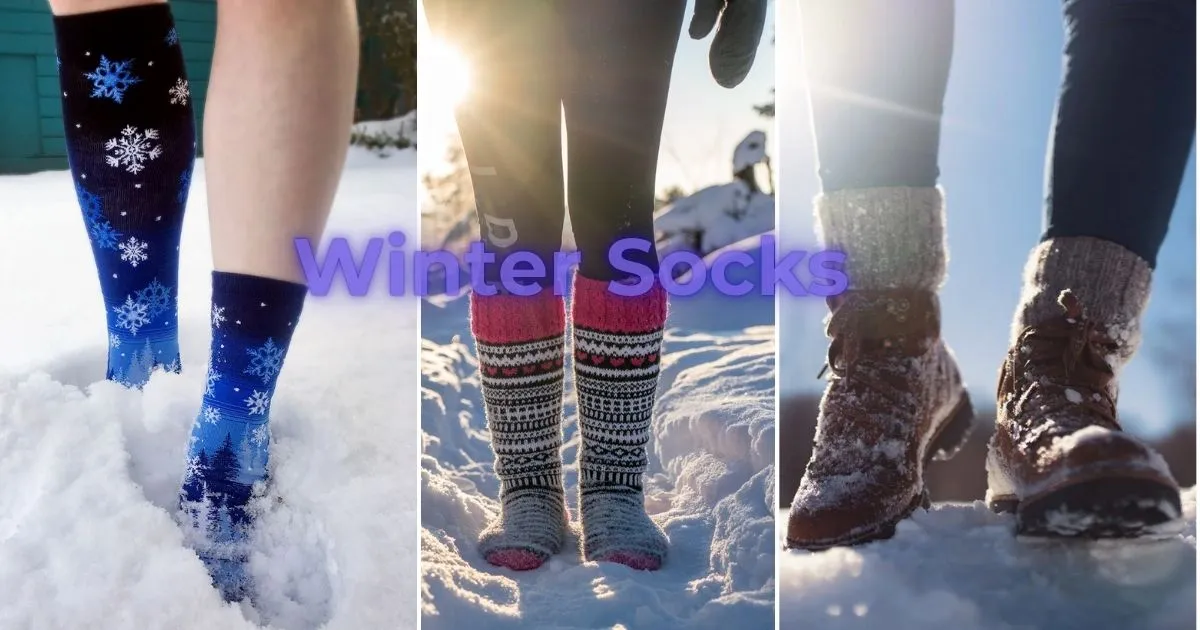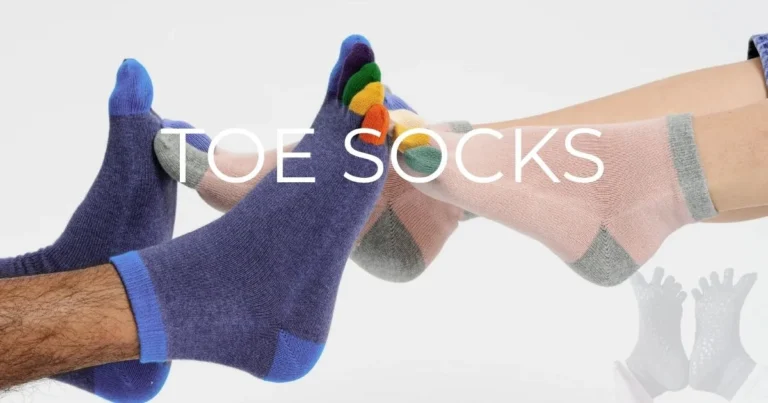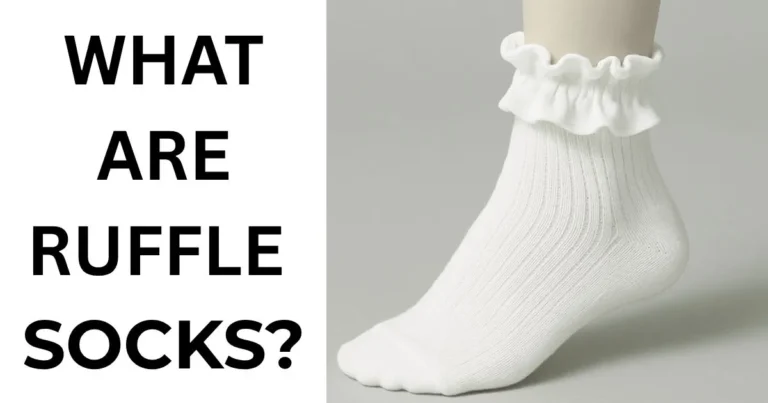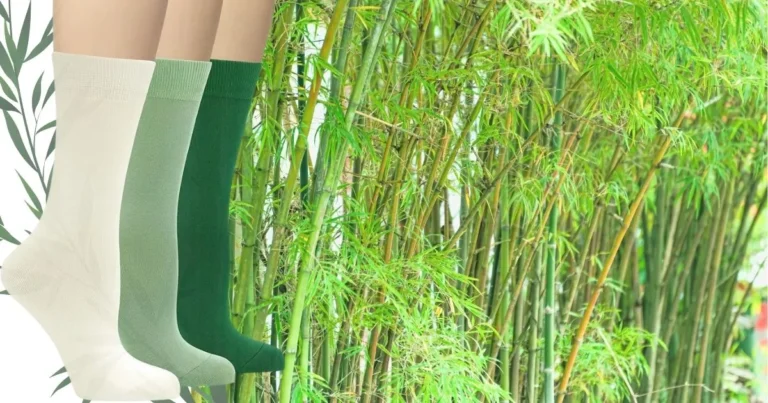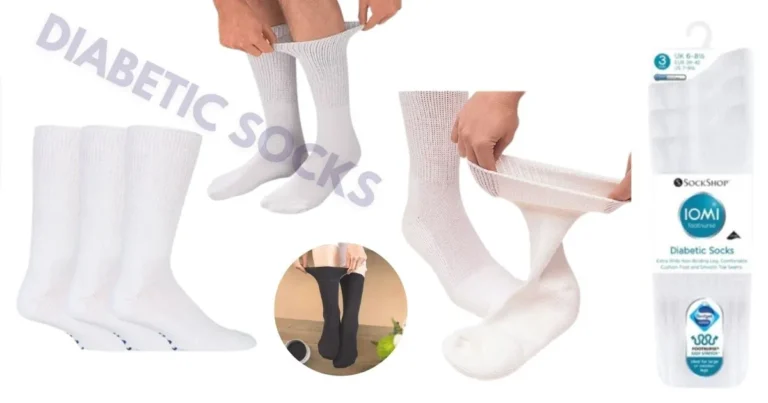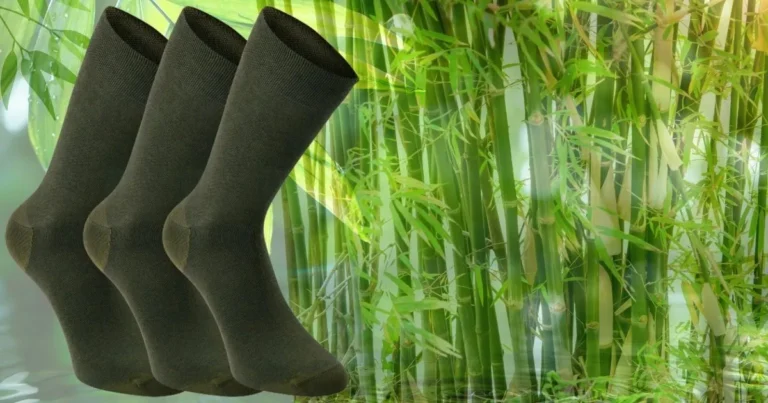Winter Socks
Cold feet ruin winter. You know the feeling. Numb toes. Wet socks. Zero comfort. You layer up and wear boots, but your feet still freeze. Uncomfortable. Distracting. Sometimes painful. That’s the problem. Winter socks. Not just thicker socks. Smart socks. Built to trap heat. Squeeze out the sweat. Keep yourself warm and dry. All of the information you require is covered in this guide.
What Are Winter Socks?
Winter socks are socks designed to fight the cold. Unlike thin everyday cotton socks, these are made from insulating materials like wool, merino wool, fleece or thermal blends. Their job? Simple. In cold weather, make sure your feet are comfortable, dry and warm.
They are usually thicker, heavier and longer than regular socks. Some even come with added padding in the heel and toe areas for comfort, especially if you are wearing boots all day.
Think of them as the winter jacket for your feet—without them, the cold slips in and you’re left shivering.
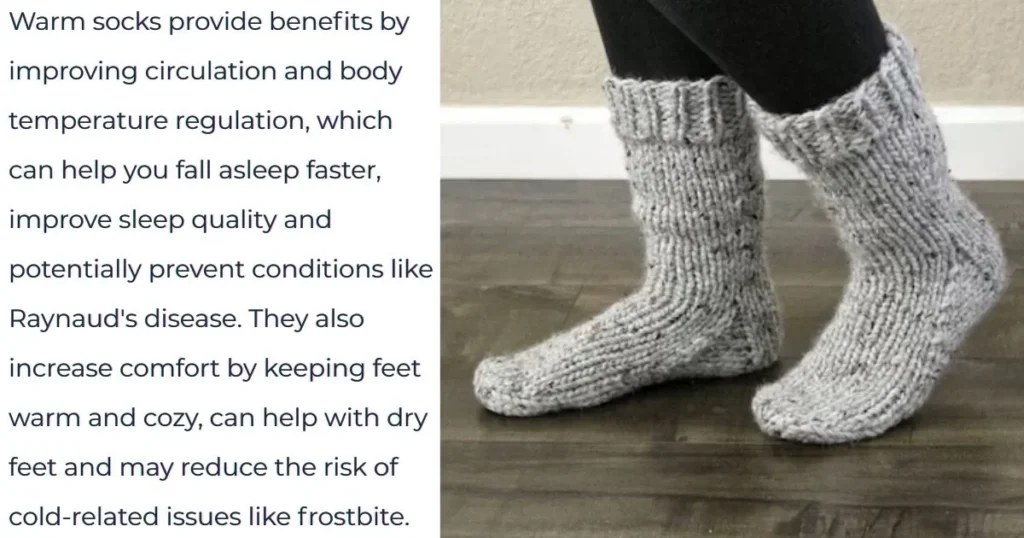
Why Do We Need Winter Socks in Cold Weather?
The feet are among the first parts of the body to feel cold. Here’s why:
- Feet are farthest from your heart, so blood flow slows down in cold weather.
- Thin cotton socks trap moisture; sweat turns cold fast.
- Cold feet mean uncomfortable, distracting and even dangerous outdoors.
That’s where winter socks come in. They:
- Trap heat so your body doesn’t lose warmth.
- Wick moisture so sweat doesn’t freeze against your skin.
- Add cushioning for long days in boots or shoes.
Without winter socks, you risk developing numb toes, blisters or even frostbite in extreme conditions. They keep you comfortable whether you’re walking to work, hiking through the snow or relaxing indoors.
What Makes Winter Socks Different from Regular Socks?
Not all socks are built the same. Regular socks focus on fashion or light comfort. Winter socks are built like gear—made to perform in extreme weather.
Here’s how they’re different:
- Material: Regular socks are typically made of a blend of cotton and polyester. Winter socks are made of wool, merino wool, fleece and thermal blends.
- Thickness: Regular socks are thin. Winter socks are thicker, offering insulation and warmth.
- Moisture Control: Cotton traps sweat. Winter socks wick it away.
- Length: Many winter socks go higher (crew, knee-high, or over-the-calf) to cover more skin and stop cold air from sneaking in.
- Durability: Winter socks are reinforced for heavy use in boots and cold conditions.
Think of it like this: regular socks are everyday sneakers and winter socks are hiking boots. Both cover your feet but one is built for much tougher conditions.
Materials Used in Winter Socks
Wool
Wool is the classic material for winter socks, trusted for centuries. It naturally holds heat, wicks away moisture and stays insulating even when damp. The only downside is that lower-quality wool can feel itchy or bulky but when mixed with softer fibers, it becomes both warm and comfortable.
Merino Wool
Merino wool is the highest quality type of wool. Its fibers are ultra-fine, making it soft, lightweight and itch-free. Merino regulates temperature, meaning it keeps feet warm in freezing weather but prevents overheating indoors. It’s one of the best materials for both everyday use and outdoor activities.
Fleece
Fleece is a synthetic fabric that feels plush, cozy and lightweight. It retains warmth effectively and dries quickly, making it popular for lounging or casual wear. However, fleece doesn’t wick moisture as well. as wool, so it’s not the top choice for intense outdoor activities.
Cotton (Blended Only)
Pure cotton is a poor choice for winter socks because it absorbs sweat and stays damp, leaving feet cold. However, when cotton is blended with synthetics, it adds softness and comfort. Cotton-blend winter socks are fine for light indoor use but not reliable for extreme cold.
Acrylic
Acrylic is a synthetic fibre designed to imitate the warmth of wool. It’s lightweight, affordable and easy to care for. While it offers decent insulation, it is less breathable and durable compared to natural fibres, making it a budget-friendly but not premium option.
Polyester
Polyester adds durability and shape retention to winter socks. It dries quickly and often appears in blends with wool or acrylic to improve performance. Alone, it isn’t warm enough, but as part of a blend, it makes socks stronger and longer-lasting.
Nylon
Nylon is used as a supporting fiber. It strengthens the fabric, reduces wear and tear and keeps socks in shape. It is not a warm material by itself, but it is essential for reinforcing heels, toes, and cuffs.
Spandex / Elastane
Spandex provides winter socks with stretch and flexibility. It ensures a snug fit so socks don’t slip down or bunch inside boots. Although it makes up only a small percentage of the fabric, it is essential for comfort.
Types of Winter Socks
Winter socks come in a variety of sizes. Different types are designed for different purposes, such as lounging at home, hiking through snow or working outside in freezing temperatures. Here are the main types you will encounter:
1. Wool Winter Socks
These are the classics. Thick, durable and naturally warm, wool socks are a go-to for cold weather. They keep feet insulated even when damp and are ideal for hiking, outdoor work or everyday wear in freezing temperatures.
2. Merino Wool Socks
A softer, premium version of wool socks. Merino wool is itch-free, lightweight and great at regulating temperature. These socks are perfect if you want warmth outdoors but don’t want sweaty feet indoors. They’re versatile enough for travel, sports, and daily wear.
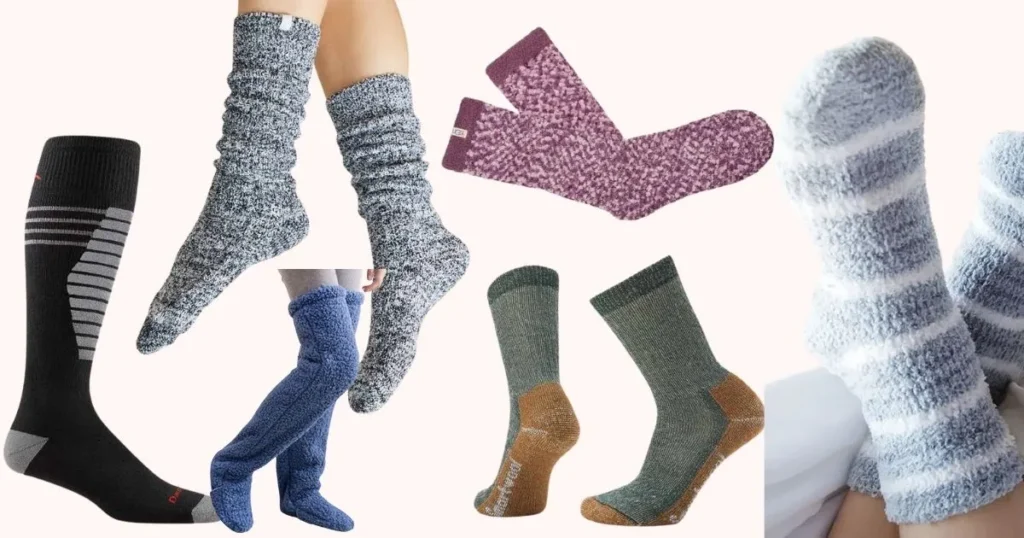
3. Thermal Socks
Thermal socks are designed for maximum insulation. They are frequently made of wool, acrylic or fleece blends, with added thickness to trap heat. If you spend a lot of time outside in the snow, thermal socks are the best option for keeping your toes warm.
4. Fleece-Lined Socks
Fleece-lined socks feel like blankets for your feet. They’re cozy, soft and perfect for wearing indoors or under boots in moderately cold weather. While not as breathable as wool, they’re great for comfort and relaxation.
5. Heated Winter Socks
These are the high-tech upgrades. Battery-powered heated socks use small heating elements to keep your feet warm for several hours. They’re ideal for extreme cold, skiing or long outdoor shifts. The only negative aspect? They are thicker and more expensive than traditional socks.
6. Sports/Outdoor Winter Socks
Designed for active use, these socks balance warmth with breathability. Whether it’s skiing, snowboarding, or winter hiking, they provide cushioning, moisture control and a snug fit to prevent blisters.
7. Fashion/Everyday Winter Socks
Not every pair of winter socks is about survival. Some are designed with style in mind—chunky knits, patterns, or colourful designs. They still offer warmth, but with more focus on looking good while staying cozy indoors or in casual outfits.
8. Workwear Winter Socks
These socks are built tough for people who spend all day outside—construction workers, delivery drivers, farmers and soldiers. They are usually reinforced at the heels and toes, thickly padded and designed to survive heavy boots and harsh conditions.
Pros and Cons of Winter Socks
| Pros | Cons |
| Keep feet warm | Can feel bulky in tight shoes |
| Wick moisture | Take longer to dry after washing |
| Durable in boots | Quality pairs cost more |
| Stylish & functional | Too hot indoors sometimes |
Final Words
Winter socks aren’t just any socks. They are your first line of defense against the cold. Regular cotton socks collapse in cold weather, trapping sweat, freezing your toes and making you miserable. Winter socks perform the opposite. They lock in warmth, wick moisture away and keep your feet comfortable whether you are hiking through snow, working outside or simply relaxing at home.
The key is selecting the right pair. Wool and merino provide natural warmth, thermal socks offer heavy-duty insulation, fleece adds comfort or you can even opt for heated socks if you want tech-powered warmth. Whatever you choose, ensure it suits your lifestyle and the weather you face.
Ultimately, warm feet mean more energy, increased comfort and greater freedom to enjoy winter rather than endure it. So, don’t treat winter socks as an afterthought; consider them essential gear. Your toes will appreciate it.

